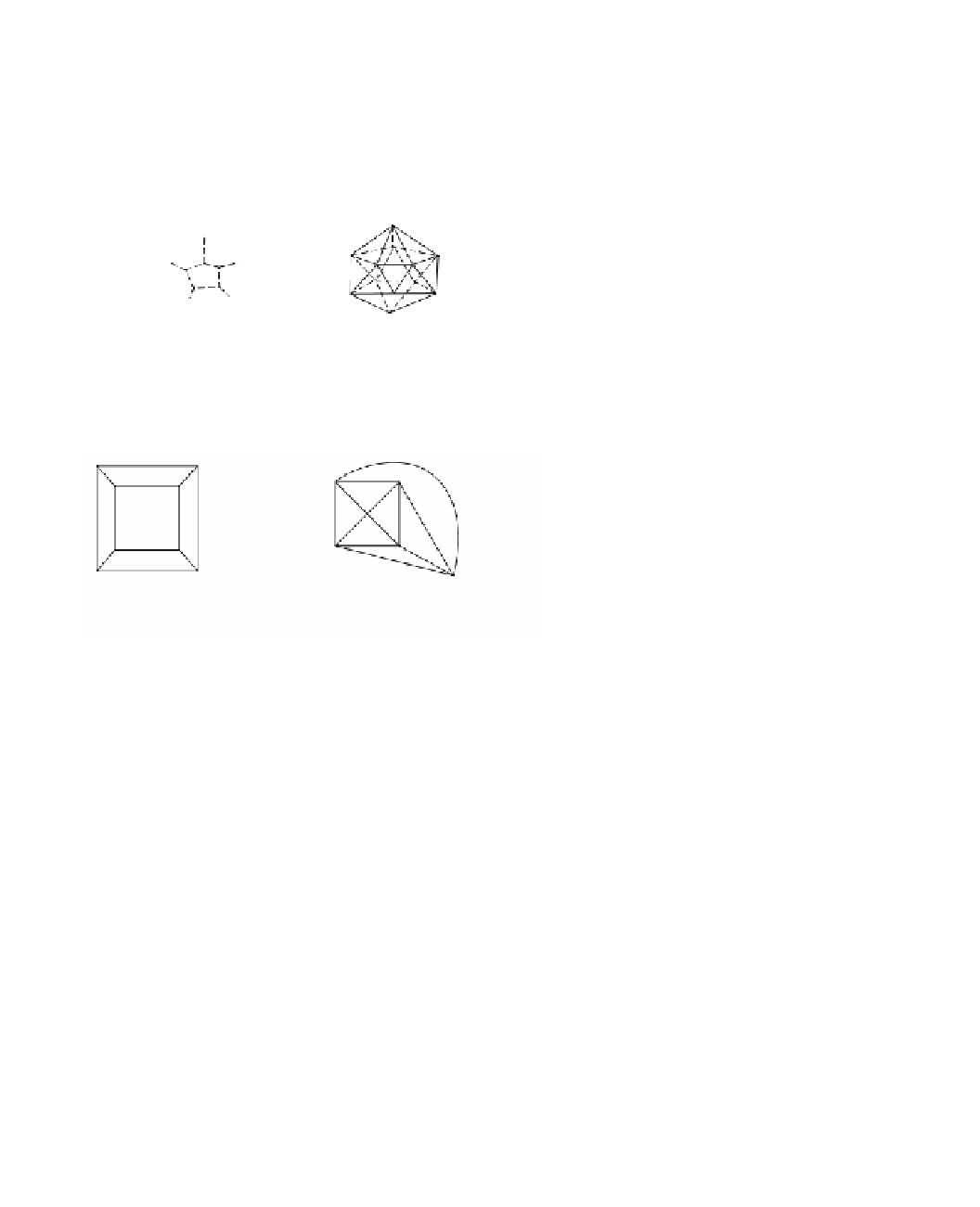Graphics Reference
In-Depth Information
Figure 6.1.
The five regular
polyhedra.
tetrahedron
(a)
cube
(b)
octahedron
(c)
dodecahedron
(d)
icosahedron
(e)
Figure 6.2.
Flattening the boundary
of a cube and octahedron
into the plane.
(a)
(b)
Sketch of proof.
Since this theorem deals with our first example of an invariant in
topology, it is worthwhile showing how this result can be proved. The argument is
actually very simple. First, we reduce the problem to a problem in the plane. The
boundary of our simple polyhedron is a sphere and so if we remove one face, then
the rest of it can be flattened out. Figure 6.2(a) and (b) shows what we would get if
we applied this procedure to the cube or octahedron, respectively. We end up with a
bounded region
X
in the plane that consists of a collection of n
v
¢ vertices, n
e
¢ edges,
and n
f
¢ faces. Clearly,
n
¢=
n
,
n
¢=
n
,
and n
¢=
n
-
1
.
v
v
e
e
f
f
The region
X
is homeomorphic to a disk
D
2
. Our original problem is now equivalent
to showing that if a disk has been subdivided into n
v
¢ vertices, n
e
¢ edges (it actually
does not matter if the edges are curved or not), and n
f
¢ faces, then
nnn
¢-
¢-
¢=1.
(6.1)
v
e
f
To simplify our problem, assume that all the faces are triangular. If this is not true
already, then we can achieve this by successively adding edges between non-adjacent


